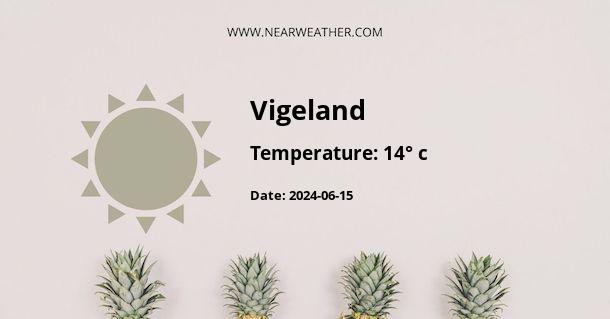Vigeland, Norway: Climate and Weather Year Round
Vigeland is a small town located in the municipality of Oslo, Norway. Situated in the southern part of the country, Vigeland experiences a temperate oceanic climate, characterized by mild summers and relatively mild winters. This article will provide a comprehensive overview of the climate and weather patterns in Vigeland throughout the year.
Temperature
The temperature in Vigeland varies significantly throughout the year. The summer months, from June to August, are generally the warmest, with average high temperatures ranging from 20°C (68°F) to 25°C (77°F). These months are also the sunniest, with long daylight hours that allow for outdoor activities and exploration.
During the winter months, from December to February, temperatures in Vigeland can drop below freezing. Average high temperatures range from -1°C (30°F) to 3°C (37°F), while average low temperatures can reach as low as -6°C (21°F). It is important to note that these are average temperatures, and extreme cold snaps can occur, particularly during the months of January and February.
Precipitation
Vigeland experiences a moderate amount of precipitation throughout the year, with the highest amount of rainfall occurring during the summer months. July and August are the wettest months, with an average of 70-80mm of rainfall. The rest of the year sees more moderate levels of precipitation, ranging from 40-60mm per month.
Snowfall is common during the winter months, particularly in January and February. On average, Vigeland receives around 10-15cm of snow per month during these months. However, snow accumulation can vary significantly from year to year, depending on weather patterns.
Sunlight and Daylight Hours
Vigeland experiences significant variations in daylight hours throughout the year. During the summer months, the town enjoys long days with extended periods of daylight. The longest day of the year, known as the summer solstice, occurs around June 21st, when Vigeland experiences nearly 18 hours of daylight. This provides ample opportunities to explore the natural beauty and outdoor activities available in the region.
Conversely, the winter months bring shorter days with limited daylight. The shortest day of the year, known as the winter solstice, occurs around December 21st, when Vigeland experiences only around 6 hours of daylight. This can have an impact on outdoor activities and may require visitors to plan accordingly.
Climate Summary
Vigeland's climate can be classified as a temperate oceanic climate, with mild summers and relatively mild winters. The town experiences moderate levels of precipitation throughout the year, with the highest amount of rainfall occurring during the summer months. Similarly, snowfall is common during the winter months, particularly in January and February.
It is important to note that weather patterns can vary from year to year, and extreme weather events can occur. Visitors to Vigeland should always check the local weather forecast before traveling and come prepared with appropriate clothing and gear for the specific season.
Conclusion
Vigeland, Norway, offers a temperate oceanic climate with mild summers and relatively mild winters. The town experiences moderate levels of precipitation throughout the year, with the highest amount of rainfall occurring during the summer months. Snowfall is common during the winter months, and daylight hours vary significantly between the summer and winter seasons. With its beautiful natural surroundings and varied climate, Vigeland offers visitors a unique and diverse experience throughout the year.
A - Vigeland's Latitude is 58.084370 & Longitude is 7.304970.
A - Weather in Vigeland is 12° today.
A - Climate Conditions in Vigeland shows scattered clouds today.
A - Humidity in Vigeland is 86% today.
A - Wind speed in Vigeland is 26.57 km/h, flowing at 289° wind direction. today.
